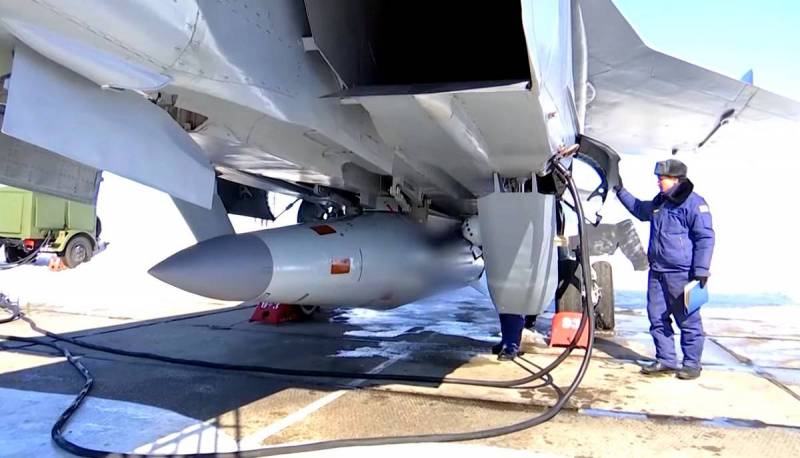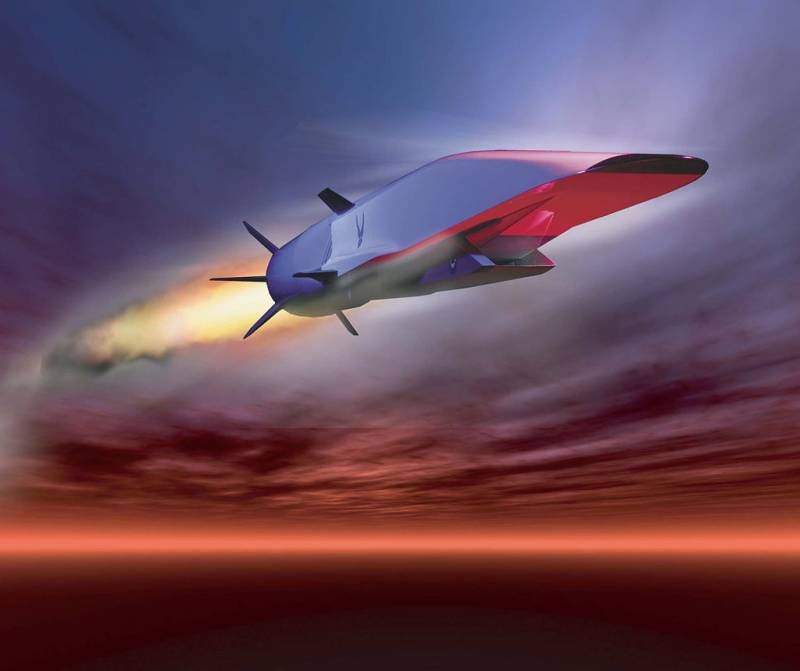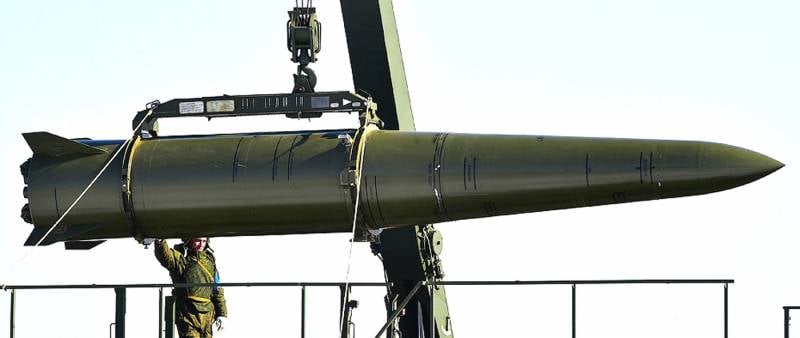"Dagger" under the belly. Estimates of the new weapons for the MiG-31 ambiguous
Recall that during the recent message to the Federal Assembly, Russian President Vladimir Putin announced the existence of several ambitious weapons programs in the Russian Federation. Here and a rocket with a hypersonic planning cruise unit, and a cruise missile with a nuclear power plant, and an underwater vehicle "Poseidon." But most of all experts were interested in the X-47М2 “Dagger” rocket, which is positioned as hypersonic: MiG-31K is a carrier of its carrier, a special modification of the famous interceptor.
Interest is understandable. The message about the rocket was supplied with a spectacular video with its launch, as well as animation of the defeat of the enemy ship. The voiced characteristics also struck many: the speed of the rocket, according to the president, is 10 Makhov, and the range exceeds 2000 km. At the same time, the “Dagger” can maneuver on all flight segments, thereby ensuring effective overcoming of the enemy missile defense system.
A solid bid for success. Especially when you consider that the MiG-31 interceptor is capable of speeds up to 3000 km / h. This can significantly increase the reaction rate, if we draw an analogy, for example, with the use of "Dagger" from the board of strategic bombers or the long-range Tu-22М3.
It is not known, however, what speed limits are imposed by the use of the “Dagger” on external holders. But another thing is known. The MiG-31 interceptor, converted into the MiG-31K variant, is deprived of the possibility of the regular use of weapons of other types, including the latest long-range R-37 air-to-air missiles. Simply put, considering the MiG-31K as an interceptor is no longer possible. In front of us aviation strike complex, focused mainly on the defeat of surface targets. The logic, presumably, is clear. A missile with a warhead of 500 kg is almost guaranteed in the event of a hit will disable a ship of any class. Including the latest US aircraft carrier such as the Gerald R. Ford or the time-tested Nimitz.
Hypersound Course
Under the modern definition of "hypersonic weapon“Experts understand a cruise missile capable of moving most of its way, of the order of 80%, at a hypersonic speed. That is, with a speed of Mach number (M) above five. To maintain this speed, a hypersonic ramjet engine is used. A striking example is the American promising Boeing X-51: you can recognize it by the characteristic shape of the air intake. The Russian Zircon rocket, which, according to official data, is about to become part of the Navy’s arsenal, is about the same. And make the American air defense completely ineffective.
But this is all in theory. In practice, the creators of hypersonic weapons face very serious difficulties, which, according to some experts, it is very difficult to overcome. When flying at hypersonic speed, a plasma is formed at the surface of the rocket, which literally envelops the apparatus, which has a huge impact on the operation of navigation systems, effectively knocking the rocket confused. This may not be an obstacle when attacking stationary targets, but when attacking naval targets, albeit relatively sedentary, an adjustment is necessary in the final leg of the flight.
According to available data, the X-47М2 product has an inertial navigation system with the possibility of adjustments from the GLONASS system, the AEW and the optical homing head. But all this does not solve the problem of missile guidance in the final segment of the trajectory before hitting the target (subject to flight at hypersonic speed). Moreover, as far as can be judged, neither the United States, nor Russia, nor China have so far coped with the existing challenges of this kind. Although actively working in this direction.
Iskander 2.0
So what is the new weapon of Russia? Is this really a breakthrough, or is it just the offspring of official propaganda? Simply put, the Dagger rocket was misunderstood. Partly to blame the media, actively picked up the official point of view. In practice, the Dagger is a fairly powerful air-launched ballistic missile that poses a threat to a number of targets. It is not a revolutionary hypersonic weapon because of:
1. The absence of a hypersonic ramjet engine.
2. Unsolved (as far as can be judged) fundamental problems associated with rocket guidance at hypersonic speed.
In more detail, we have an airborne Iskander in front of us. For example, the specialists of the well-known Western edition "Air & Cosmos" wrote about the relationship with the ground-based complex in the article "Le Kinzhal Devoile". You can also recall the very controversial in every sense, but read and discussed The National Interest. And one of its permanent authors, Dave Majumdar, who adheres to the same position.
Most often, X-47М2 is considered as an aviation version of the Iskander-M 9М723 rocket with an 480 km range. Of course, it makes no sense to equate these missiles. The aviation variant did, in one way or another, have had to be greatly modernized, and much more so than the carrier aircraft. It is known that 9М723 has a high flight speed - 2100 m / s, however, it falls to the target 700-800 m / s. In other words, before hitting a target, a rocket has a high supersonic, but not hypersonic speed. It is likely that aeroballistic "Dagger" has similar characteristics. In other words, ideologically, it is closer to the Soviet air-based X-15 rocket than to the American X-51 or to the semi-mythical “Zircon”.
It is worth repeating, does not mean that the rocket is bad. In any case, none of the countries of the world have such a complex. And not the fact that it will appear in the near future, as now other aviation means of destruction are in trend. The correctness or incorrectness of the chosen paths by the creators of X-47М2 will be shown by time, or rather, by experience of operating the rocket. At the same time, I really want to believe that no one will use the Dagger in a real battle.



Information